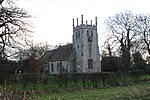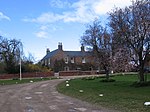Beverley/Linley Hill Airfield
Airports in EnglandAirports in YorkshireBeverleyTransport in the East Riding of YorkshireUnited Kingdom airport stubs ... and 1 more
Use British English from May 2013

Beverley/Linley Hill Airfield (ICAO: EGNY) is an unlicensed aerodrome located 4 nautical miles (7.4 km; 4.6 mi) north-east of Beverley, East Riding of Yorkshire, England. Beverley/Linley Hill had a CAA Ordinary Licence (Number P762) that allowed flights for the public transport of passengers or for flying instruction as authorised by the licensee (Hull Aero Club Limited). The aerodrome was not licensed for night use. The aerodrome ceased to be licensed in 2011.In January 2023 a planning application was approved by the East Riding of Yorkshire Council for a new hanger and facilities.
Excerpt from the Wikipedia article Beverley/Linley Hill Airfield (License: CC BY-SA 3.0, Authors, Images).Beverley/Linley Hill Airfield
Linleyhill Road,
Geographical coordinates (GPS) Address External links Nearby Places Show on map
Geographical coordinates (GPS)
| Latitude | Longitude |
|---|---|
| N 53.898333333333 ° | E -0.36138888888889 ° |
Address
Linley Hill (Beverley)
Linleyhill Road
HU17 5LT , Leven
England, United Kingdom
Open on Google Maps











